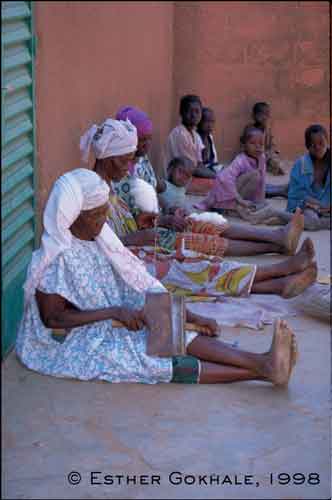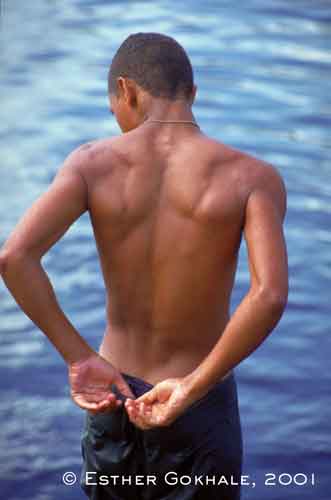A Review of Four Core Routines and Their Effectiveness for Preventing or Treating Back Pain
A Review of Four Core Routines and Their Effectiveness for Preventing or Treating Back Pain
Aside from the food you eat, exercise is one of the most important factors in being free from chronic disease. It is also something that can be added to almost any lifestyle because there are so many different ways to get your daily exercise.
Pilates and yoga are two popular routines and each has benefits over and beyond strengthening your core. I’m also partial to Foundation Training, as it not only builds strong core muscles but also counteracts postural problems that can cause back pain.
The Gokhale Method also has distinct merits as it teaches you proper posture, which is critical to make the most out of every movement, in and outside the gym. If your posture is good, every movement you make becomes like a therapeutic exercise.
The featured article in The New York Times1 reviews some of the differences between Pilates and yoga, which I’ll summarize here.
I’ll then address some of the added benefits of Foundation Training and the Gokhale Method, and why I believe Foundation Training may offer the best of all worlds in terms of building a strong core, eliminating back pain, and promoting optimal health that goes beyond fitness. It also decreases your risk of exercise injury.
While all four of these exercises help develop stability through your entire torso, Foundation Training and the Gokhale Method are particularly helpful if you want to prevent or treat back pain, as they both address fundamental posture issues that lie at the root of most pain.
Pilates—Great for Core Building, But May Fall Short if You Have Back Pain
The core strengthening fitness routine known as Pilates got its name from its creator, fitness trainer Joseph Pilates. Its balanced movements, which emphasize awareness of your body mechanics, help build core strength, flexibility and grace. As stated by Joseph Pilates himself, “It’s not about quantity, it’s about quality of the movement.”
Pilates can be done either on a floor mat or on specially designed Pilates equipment for increased resistance. The program is highly adaptable for a variety of fitness levels as it can be modified up or down in terms of difficulty.
There’s little doubt that it’s effective for targeting your core. Through a technique called “electromyography,” Auburn University researchers determined that 10 repetitions of the Pilates roll-up or double-leg stretch exercises activated the deepest abdominal muscles (i.e. transversus abdominis and internal obliques) better than 10 regular crunches.
As stated in the featured article:
“If your aim is to strengthen your midsection, then Pilates is a fine choice. In a small but well-designed study2 last year, nine sedentary women who completed 36 weeks of supervised Pilates training bulked up their abdominal muscles by as much as 20 percent, while also lessening any existing muscular imbalances there.”
When it comes to preventing or treating back pain, however, Pilates may not be your most effective strategy. According to a 2012 systematic review3 of studies evaluating the effectiveness of Pilates for people with non-specific chronic back pain, Pilates did not improve functionality and pain compared to the control group and groups doing other forms of lumbar stabilization exercises.
I also took private Pilates lessons with a certified instructor all last summer and really never noticed much improvement with my low back pain, which did clear up with Foundation Training, standing up every 10 minutes while sitting, and integrating the Gokhale Posture techniques.
I believe the reason for this could be because so many of us have poor posture and poor body mechanics to begin with, and hence strengthening your core is just not enough. The featured article also questions the ability of Pilates to fortify the rest of your body, stating4:
“A review last year of Pilates-related science found little credible evidence that the exercises added muscle or incinerated body fat apart from in the midsection. Yoga, however, especially hatha yoga, with its flowing poses, may strengthen larger sections of the body.”
Yoga Does More Than Build Core Strength
Yoga is a practice that has been around for 5,000 years. Although many regard yoga as just another form of exercise, it’s really a much more comprehensive practice that integrates mental, physical and spiritual elements. The health benefits of yoga are manifold. It strengthens and tones your body, increases circulation and oxygenation, energizes you in the morning and helps you unwind in the evening. People also frequently report the disappearance of aches and pains, better immunity, improved sleep, lowered blood pressure, improved digestion, and faster healing when they do yoga.
There are many forms of yoga—enough for most people to find a style that suits their temperament and fitness needs. And while it involves gentle exercises designed to soothe joints and muscles along with improving other body systems and organs, some styles can offer quite an intensive workout. From a purely physical standpoint, yoga is excellent for your core and complements other parts of your overall exercise program, such as interval and strength training. It strengthens your back, pelvis, shoulders, and spine. It also helps cut and reveal those six-pack abs.
According to the featured article:
“A telling 2011 study published in the Asian Journal of Sports Medicine5 found that after six months of almost-daily sun salutations (a multipart yoga pose) and no other resistance training, young men and women could bench-press significantly more weight and complete far more push-ups and pull-ups than at the start of the study.”
Yoga is also widely used as a natural form of pain relief because it is thought to help regulate your brain’s pain center and its attention to breathing is calming and reduces tension, which can help with pain management. Many yoga teachers also offer routines specifically designed for certain conditions, such as arthritis or back pain, so you can look for a program that fits your specific needs.
With regards to back pain, it’s important to realize that there’s a major difference between developing muscle flexibility and laxity or looseness in your ligaments. Unless you make sure to maintain a J curve spine during bends you run into the danger of creating lax ligaments in your spine, which is precisely what you want to avoid.


Foundation Training—The Best of Both Worlds
Besides Yoga, Foundation Training, developed by chiropractor Eric Goodman, is an elegant approach that can be particularly useful for those with back pain and/or those who are too infirm for yoga or Pilates. It also helps counter the ill health effects associated with excessive sitting.
Foundation Training is based on integrating the muscular chains of your body with simple, powerful exercises that help strengthen and realign your spine and core. No equipment is needed, so you can do them just about anywhere. As Dr. Goodman explains, your core is anything that connects to your pelvis, whether above or below it, and this includes your hamstrings, glutes, and adductor muscles. Foundation Training teaches all those muscles to work together through integrated chains of movement, which is how you’re structurally designed to move.
Doing these exercises has made a remarkable improvement in some nagging low back pain I’ve had when I would stand or walk for more than a mile. If this is a challenge for you, I would strongly recommend that you consider adding “The Founder” exercise to your daily routine. This exercise helps reinforce proper movement while strengthening the entire back of your body by dispersing your weight through the posterior chains. As a result, your weight shifts back toward your heels and “untucks” your pelvis. By doing so, you lengthen your hip flexors, gaining length at the front of your body. In doing that, you teach your hips to hinge properly with a nice, long and strong front.
If you’re doing Foundation Training correctly, your body will actually respond as if it’s a high-intensity exercise. It may not seem like it, because it’s just a simple isometric pose. But if done right, it’ll actually make you sweat. For more instructions and video demonstrations, please see this previous article.
To Improve Your Core, Strengthen These Muscles
According to Dr. Goodman, “When it comes to your core, ‘It’s all in the hips, baby.’” Every muscle that directly connects to your pelvis should be considered a piece of your core. Your athletic ability, flexibility, balance and strength are all dependent on powerful hips. To accomplish that, Dr. Goodman recommends strengthening the following muscles using the Foundation Training Program:
- 1. Glutes: These are the powerhouses of your body. They do not work alone.
2. Adductors (Inner thigh muscles) are your built-in traction system. When the adductor group of muscles remains strong you have increased hip stability, stronger arches in the feet, and a pelvic brace using a couple of the strongest muscles in your body.
3. Your deep lower back muscles facilitate the proper integration of the Posterior Chain of Muscles. Simply put, a weak lower back changes every aspect of your movement patterns for the worse.
4. Your abdomen and hip flexors: Think of the front of your body as a window that shows what is happening at the spine and pelvis. If the front is always too tight, the back is not working properly.
5. The Transverse Abdominal muscle: A built-in bracing system. When the transverse abdominus is tightened against the other muscles among this core group, the entire system becomes stronger
Address Root Cause of Back Pain by Relearning Proper Posture
I have recently learned that non-exercise movement and posture are two incredibly important yet sorely neglected baselines for health. The more I learn about them, the more convinced I am that posture and non-exercise movement are every bit as important as regular exercise in terms of importance—especially when we’re talking about maintaining a lifetime of structural health and unobstructed movement, free of pain.
Proper posture and properly using your body to work against gravity is the foundation upon which everything else related to your health is built. By understanding the functional biomechanics of your body and working with gravity instead of against it, you learn to optimize the way you move about your life all the time. This in turn effectively prevents aches and pains from ever developing in the first place.
The Gokhale Method quickly and efficiently teaches you to reclaim what its creator, Esther Gokhale, calls “primal posture,” which is the way your body was designed to stand, sit, and move. While conventional advice tells you to tuck in your pelvis to maintain an S-shaped spine, Esther has found that a J-spine is far more natural. A J-spine refers to a posture where your back is straight, your lumbar relatively flat, and your buttocks are protruding slightly. This is the natural stance of toddlers, for example.
By tucking your pelvis, you lose about a third of the volume in your pelvic cavity, which squishes your internal organs. This can compromise any number of them in a variety of ways. Primal posture, on the other hand, provides an ideal architecture for your lungs to move freely and for your digestive organs to function without blockages.
The Gokhale Method very effectively addresses the root cause of physical pain, which is typically caused by improper posture. Clearly, learning proper posture BEFORE you’re in pain would be ideal. Esther’s book, 8 Steps to a Pain-Free Back, contains over 1,000 illustrations and photographs and is an excellent manual. She also has a DVD that provides demonstrations of all her techniques. If you want to go to the next step, you can find a teacher of Gokhale Method on her website, GokhaleMethod.com6.
One of the key factors for treating your pain is to elongate your spine as much as possible. The following two videos demonstrate what Esther calls “stretch-sitting” and “stretchlying,” which effectively help you elongate your spine.